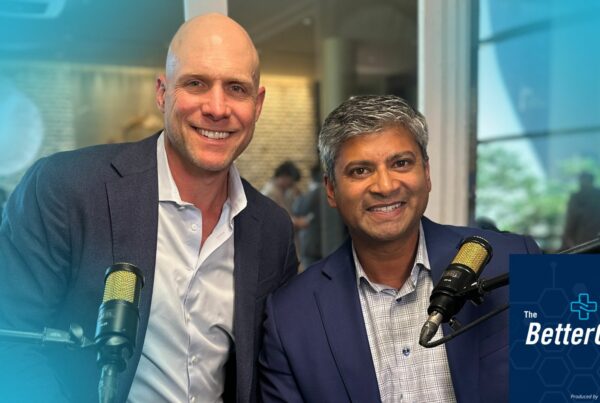The Financial Burden on Utilization Review
With the rise of costs and financial frustration across the healthcare industry, an efficient Utilization Review (UR) or Utilization Management (UM) department is crucial to a health system. Unfortunately, many health systems struggle with inefficient processes around UR and Revenue Cycle Management.
This article will share insight into how to use technology to create a modern, efficient UR department based on insight gathered from our conversation with Andrea Ortman – VP of Inpatient Care Management and Post-Acute Care at Geisinger.
In case you aren’t familiar, the Utilization Review team evaluates the appropriateness of care, using established criteria to ensure efficient and effective care is provided to the patient. UR is also responsible for ensuring the payer will provide appropriate financial coverage for the billions of dollars in medical care provided by the hospital, making the UR department liable for a significant amount of money and revenue in a health system.
The extensive amount of administrative work associated with a UR department has not only been a burden for providers and payers, but it’s extremely costly. It’s estimated that the US spends $950 billion on administrative functions in healthcare annually, with UR functions responsible for an estimated $200 billion.
By using technology, health systems can simplify these administrative tasks, allowing UR teams to focus on more complex issues while decreasing burnout and improving margins.
Leveraging the EHR to end the battle between payers and providers
Getting coverage, authorizations, and payment for services performed at a hospital can be a challenge for UR teams. A significant amount of effort is required for hospitals to get paid for the quality care they provide.
The UR team has historically had to put the case together piece by piece and fax the information to the payer, which could result in a lot of back and forth and a lot of manual hours.
There is an opportunity to work more efficiently and collaboratively with the payer by giving them direct access to the information they need in the EHR to determine if the case meets medical necessity for inpatient status.
“At Geisinger, we’re leveraging our electronic health record system and saying, ‘Listen, payer, I’m going to give you an automated notification that your patient is receiving services in our hospital. I’m going to tell you the order that we’ve placed (meaning there’s been a dialogue between the UR reviewer and the providers, and we are confident that our status is appropriate), and we want you to come and query the chart. You look for the information that is most helpful to you.’” -Andrea Ortman
The payer is going to get the records one way or another but by providing them with access to the record upfront, denials are decreased, the concurrent review eliminated, and administrative efficiency is increased, all saving the hospital time and resources. Sharing this data also creates a better patient experience by speeding up clinical decision-making, decreasing out-of-pocket expenses, and improving the quality of care.
How technology impacts the nurse staffing shortage
Since 2020, the nursing shortage has directly impacted UR departments and is an ongoing challenge. The role of a UR nurse is difficult to fill as the role requires not only clinical experience but knowledge and passion for policy. UR departments must leverage technology in every way possible to optimize the resources available to them.
“Have your team focus on meaningful work and find other ways to accomplish the tasks, such as notice of admission and notice of discharge. You don’t need a human to do those things. It’s all logic based. The key is to manage the staffing with your technology.” – Andrea Ortman
UR teams should be using smart logic to automate work queues to create a more efficient workflow. This will make the department more productive, allowing staff to do more with less.
Most of the administrative tasks that take up a significant amount of time for UR staff can be completed with the use of technology to allow staff to focus on more meaningful work.
“Why have your team spend time providing a payer with a notice of admission? Use technology! At Geisinger, we have automated workers built that complete that notice of admission. The inpatient order is the trigger for that automated worker to notify that plan that the case requires review.” – Andrea Ortman
Getting physicians more involved in UR with AdmissionCare
There is a gap that exists between physicians and UR teams in many health systems. Physicians are typically placing the status order and are documenting to support the level of care without knowing the criteria and regulations necessary to ensure the hospital gets paid.
UR teams are are busy and don’t want to bother physicians for peer-to-peer reviews with payers, requests to change bed status, and fill gaps in documentation. All of which can be time-consuming tasks. With physician burnout at an all-time high, it’s a pain point for physicians and UR teams.
The solution is to get physicians more involved in the UR process to create more efficient communication and understanding. Educating physicians to be more involved in the UR process will allow them to understand the importance of UR and their efforts to support them.
“The provider has no idea what UR is asking them to do. So, when a UR nurse is knocking on their door, saying, ‘Hey, could you put this in your note?’ Or ‘could you adjust your order to reflect inpatient status?’ They have no idea what that nurse is asking. You need to help physicians understand not only what’s in the criteria but what that payer is going to be looking for. It’s an opportunity for education for all providers because 100% of providers, no matter what their practice, are going to deal with utilization review at some point in time.” -Andrea Ortman
When a patient is placed in the wrong bed status, with improper documentation, it can result in a massive loss of revenue. And even with education and transparency from the UR department, physicians aren’t trained on the admission criteria and don’t have time to learn and keep up with constantly changing criteria.
When the criteria for bed status determinations is located in the physician’s workflow in the EHR with AdmissionCare, physicians have the criteria and documentation they need to succeed from the start. When inaccurate bed status and poor documentation are avoided, so are interruptions from UR and physician advisors. This process creates an efficient UR team and a more collaborative relationship with physicians.
“What we’re doing with AdmissionCare is a little different. The UR nurse gets notified that there is a patient that has a recommend to admit status on their chart or a review needs to be done. The attending provider can start the admission process, but the UR nurse will complete the financial status component of the order. AdmissionCare has made it possible to put all this information in the electronic medical record, so the criteria is available to the provider, and we no longer have to worry about changing that order. With AdmissionCare, the criteria is now embedded in a physician progress note that is co-signed and available to the payers that have EHR access.” -Andrea Ortman
Listen to Episode 1 of The Better Care Podcast – Creating a Modern UR Department with Andrea Ortman of Geisinger to hear more about what Geisinger is doing to create a modern, efficient UR department.









